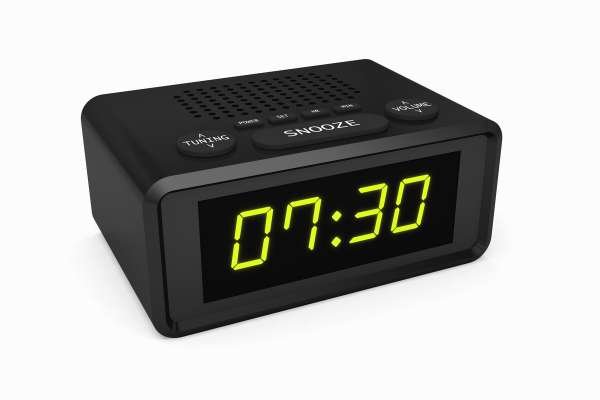Digital alarm clocks, integral to our daily routines, mark a significant advancement in how we interact with time. The invention of these innovative timepieces dates back to the late 20th century, transforming the landscape of timekeeping with their precision and convenience. When were digital alarm clocks invented? This article explores their origins, tracing the evolution from early electronic watches to the sophisticated devices that now grace our nightstands. As we explore the technological breakthroughs and key figures behind this invention, we’ll uncover how digital alarm clocks have evolved to become a ubiquitous part of modern life, offering more than just a means to wake us up each morning.
The Concept of Timekeeping
The concept of timekeeping underwent significant transformations long before the advent of mechanical and electronic devices. Ancient civilizations relied on natural indicators, such as the position of the sun and phases of the moon, to mark time. Sundials and water clocks were among the earliest mechanical methods developed to measure time more precisely. As technology progressed, the transition from analog to modern timekeeping marked a pivotal shift. This evolution was not limited to clocks alone but spanned across various technologies, enhancing accuracy and ease of use. The shift to digital, particularly in timekeeping devices, represented a major leap forward in our ability to track and manage time efficiently.
Early Developments in Electronic Clocks
Before the advent of digital displays, early electronic clocks laid the groundwork for the technological leaps that would follow. In the mid-20th century, these watches, primarily utilizing analog interfaces and vacuum tube technology, began to replace mechanical gears and springs. The shift towards transistor-based circuits in the 1950s represented a pivotal innovation, dramatically reducing size, increasing reliability, and improving energy efficiency. This period also saw the integration of quartz crystal oscillators, which significantly enhanced accuracy by providing a stable timekeeping element. These technological advancements were crucial in setting the stage for the modern displays that would revolutionize timekeeping in subsequent decades.
The Invention of the Digital Alarm Clock

The digital alarm clock, a revolutionary innovation in timekeeping, was first introduced in 1956. This pioneering device was developed by the engineers at Bell Telephone Laboratories. The first model featured groundbreaking technology, such as a modern display that used a system of vacuum tubes and diodes to project the time. This early digital alarm clock was not only a marvel of engineering but also represented a significant leap forward in how people interacted with technology in their everyday lives. The invention showcased the potential of modern displays and paved the way for the myriad of digital devices we rely on today.
Technological Components of the First Digital Alarm Clocks
The first digital alarm clocks, introduced in the 1970s, revolutionized timekeeping through their use of cutting-edge technology. These early models were equipped with LED displays that offered clear, instant readability—a stark contrast to the moving hands of analog clocks. Inside, sophisticated circuitry managed the clock’s functions, ensuring precise time accuracy that analog mechanisms struggled to match. This modern technology not only provided enhanced functionality, such as more precise alarm settings and integrated calendars, but also laid the groundwork for the multifunctional devices we rely on today. The transition to digital was pivotal, marking a significant step forward in how we use and interact with technology in our daily lives.
Challenges and Solutions in Early Digital Clock Development
Developing the first digital alarm clocks presented numerous technical challenges, primarily centered around the limitations of early modern technology. Engineers struggled with creating reliable and compact electronic circuits that could effectively power the new LED displays, which were then a novel technology. Additionally, ensuring these watches were user-friendly while offering more precise timekeeping posed significant hurdles. Innovators responded by enhancing semiconductor technology, which allowed for smaller, more efficient components. This advancement was crucial to reducing power consumption and improving the durability and functionality of the clocks. Such innovations laid the groundwork for the reliable and feature-rich digital alarm clocks we use today.
Impact of Digital Alarm Clocks on Society
The advent of digital alarm clocks revolutionized the way we manage our daily schedules and routines. By providing precise timekeeping and customizable features, these devices have empowered individuals to enhance their time management skills effectively. Furthermore, digital alarm clocks played a pivotal role in familiarizing the general public with modern technology, setting the stage for the broader adoption of digital devices in households. As an integral part of the modern transformation, these watches not only streamlined day-to-day activities but also promoted a culture of punctuality and efficiency, deeply influencing societal habits and the structure of everyday life.
Evolution of Digital Alarm Clocks
Over the years, digital alarm clocks have undergone significant technological evolution, transforming from simple time-telling devices into multifunctional gadgets essential for daily life. Initially introduced with basic features, these clocks now boast advanced functionalities like radio integration, enabling users to wake up to their favorite stations. Additionally, the integration of multiple alarms caters to diverse schedules, while snooze functions allow for gradual wake-up routines. These enhancements reflect the clock’s adaptation to modern needs, making it a staple in bedrooms worldwide. This evolution highlights not just technological progress but also a deeper understanding of user preferences and lifestyles.
Modern Digital Alarm Clocks and Smart Integration
Modern digital alarm clocks have evolved far beyond their initial function of timekeeping, integrating seamlessly with today’s smart home systems and Internet of Things (IoT) devices. These watches now serve as hubs that control lighting, adjust thermostats, and even interact with virtual assistants. This integration allows for a more personalized wake-up experience, using gentle lighting and preferred sounds. The sophistication of current models includes features such as voice control, wireless charging, and sleep tracking, offering users unprecedented convenience and enhancing the quality of their daily routines. As technology advances, digital alarm clocks continue to redefine our morning rituals, making them more intuitive and interconnected.
FAQs for When were digital alarm clocks invented?
1. When was the first digital alarm clock invented?
✅The first digital alarm clock was introduced by Sony in 1972.
2. Who invented the digital alarm clock?
✅The development involved many contributors, but Masaru Ibuka of Sony is a notable figure.
3. What technology made digital alarm clocks possible?
✅Advances in LED and LCD displays, along with integrated circuits, enabled digital alarm clocks.
4. How did digital alarm clocks change consumer electronics?
✅They offered more precise timekeeping and features like multiple alarms, shifting from analog to digital technology.
5. Are digital alarm clocks still in use today?
✅Yes, they are still popular and have evolved to include smart features and connectivity options.
Conclusion
The journey through the history of digital alarm clocks reveals their invention in the late 20th century as a pivotal moment in timekeeping technology. Since their inception, these devices have continuously evolved, integrating advanced features that cater to modern lifestyles. Today, modern alarm watches are not just tools for waking up; they are integral parts of smart homes, enhancing our daily routines with precision and innovation. Their ongoing development promises to keep pushing the boundaries of what is possible in our interactions with time, ensuring that they remain a staple in households around the world. This exploration underscores the enduring impact and importance of digital alarm clocks in our lives.
